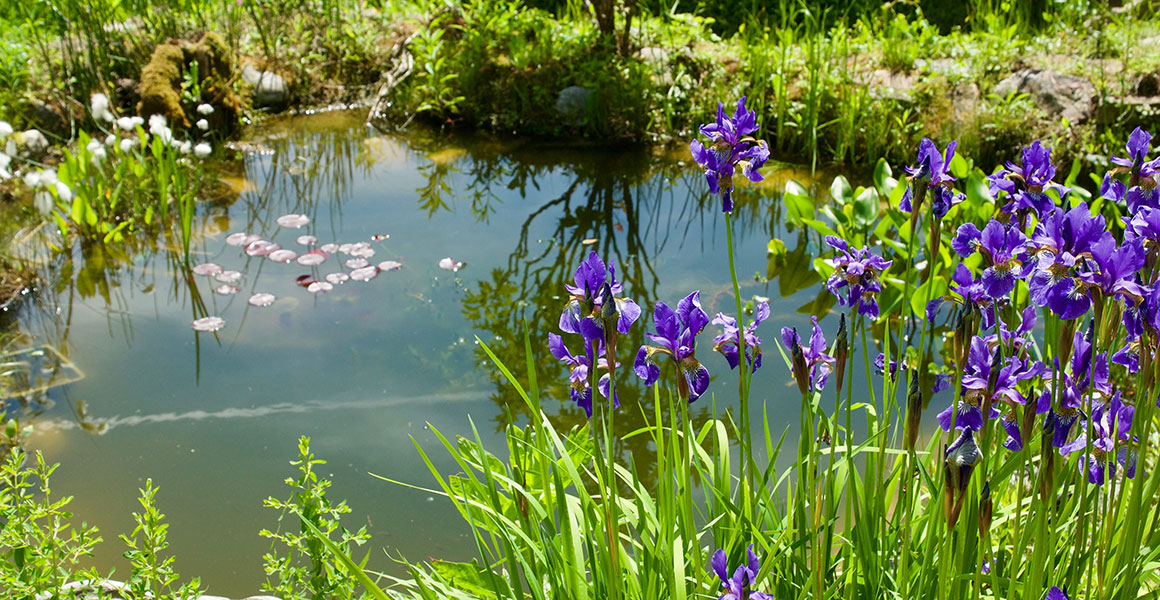Ponds need at least one kind of submerged oxygenating plant. As well as adding oxygen to the water, they provide creatures with valuable cover.
Adding emergent plants will allow insects that start life in the water - such as dragonflies - to exit the pond when they are ready to transform into adults.
Marginal plants around the damp edges of a pond provide cover for amphibians and bathing birds, and hunting grounds for dragonflies.
Floating plants are good for attracting insects that lay eggs in the pond or on the underside of floating vegetation.
It is best to plant native pond plants as non-native aquatic plants can be problematic if they escape into the wild.
The more plant variety the better, as it creates niches for more creatures. The following species are native to the UK and suitable for small ponds:
Oxygenators:
- hornwort (Ceratophyllum demersum)
- willow moss (Fontinalis antipyretica)
- water starwort (Callitriche stagnalis)
Emergent plants:
- water mint (Mentha aquatica)
- lesser spearwort (Ranunculus flammula)
- lesser water plantain (Baldellia ranunculoides)
- water forget-me-not (Myosotis scorpioides)
Marginal plants:
- creeping Jenny (Lysimachia nummularia)
- greater bird's foot trefoil (Lotus pedunculatus)
- water avens (Geum rivale)
Floating plants:
- frogbit (Hydrocharis morsus-ranae)


Don't miss a thing
Receive email updates about our news, science, exhibitions, events, products, services and fundraising activities. We may occasionally include third-party content from our corporate partners and other museums. We will not share your personal details with these third parties. You must be over the age of 13. Privacy notice.
Follow us on social media